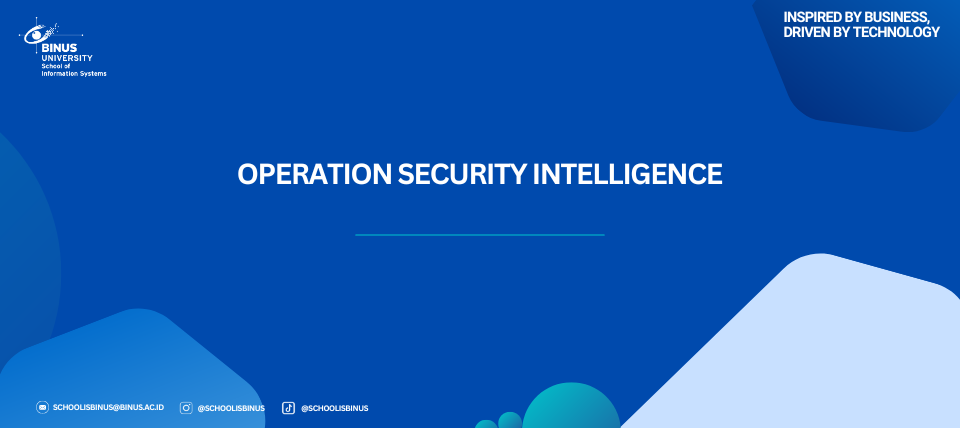OPERATION SECURITY INTELLIGENCE

Operation Security Intelligence is a security discipline focused on identifying, protecting, and managing sensitive information to prevent unauthorized disclosure or exploitation. In this context, intelligence-based approaches are applied to ensure that potential security vulnerabilities are identified and addressed before they become actual threats.
Key Principles of Operation Security Intelligence
1. Identification of Sensitive Information:
o The identification of sensitive information is a critical step in ensuring information security. It involves understanding the nature of sensitive data, its potential impact if compromised, and the appropriate security measures to protect it
o Identifying data, information, or assets that need protection, such as operational secrets, strategies, technologies, or organizational plans.
o Comprehensive Data Inventory, risk assessment, data classification, manage access controls, protection data,
2. Threat Analysis:
o Threat analysis is a critical component of operational security intelligence, as it involves identifying, assessing, and prioritizing potential threats to an organization’s assets, operations, and personnel. By understanding and anticipating threats, organizations can implement effective security measures to mitigate risks and protect their interests.
o Understanding potential threats from both internal and external sources, including individuals, groups, or nations interested in accessing the information.
o Organizations can proactively identify and mitigate risks, improve their security posture, and protect their critical assets and operations.
3. Intelligence Gathering:
o Intelligence gathering involves the collection, analysis, and dissemination of information to understand potential threats, vulnerabilities, and risks to an organization’s assets, operations, and personnel. By proactively gathering intelligence, organizations can take steps to mitigate threats and protect their interests.
o Utilizing intelligence collection techniques (e.g., OSINT, HUMINT, SIGINT) to comprehend threat patterns and potential sources of information leakage.
4. Leak Prevention:
o Developing and implementing policies and procedures to protect sensitive information from unauthorized access.
5. Risk Management:
o Assessing risks related to potential information leaks and implementing appropriate mitigation measures, such as data encryption, staff training, and network monitoring.
6. Testing and Auditing:
o Regularly testing security systems to ensure protection remains effective against evolving threats.
Goals of Operation Security Intelligence
1. Prevent Exploitation:
o Safeguarding operational information from adversaries who could use it to harm the organization.
2. Operational Security:
o Ensuring operations proceed without interruptions due to leaks or intrusions.
3. Threat Responsiveness:
o Enabling the organization to detect, respond to, and address threats quickly.
4. Support Strategic Decisions:
o Providing relevant data to facilitate safer and more effective decision-making.
Examples of Application
1. Military:
o Securing military operation plans from enemy intelligence.
2. Corporate:
o Protecting customer data and business strategies from cyber theft.
3. Government Agencies:
o Preventing the leakage of classified documents that could impact national security.

